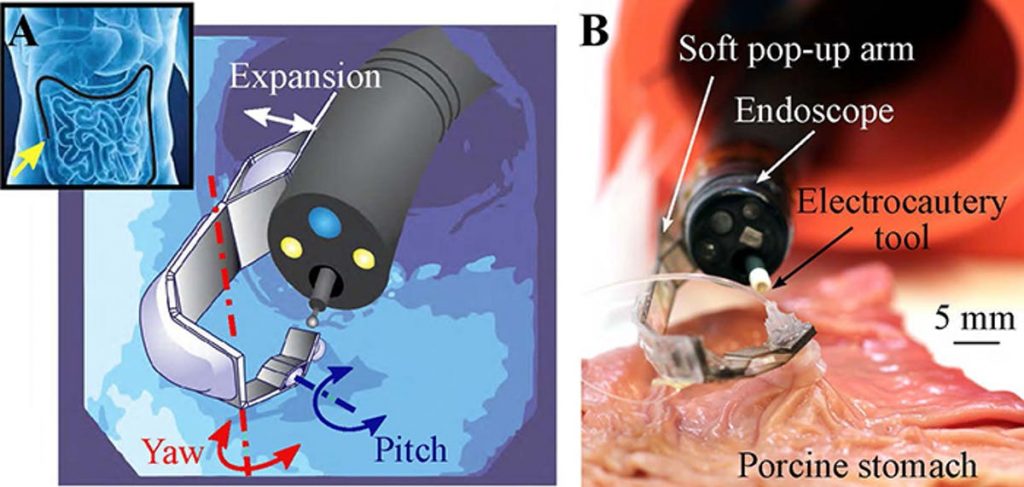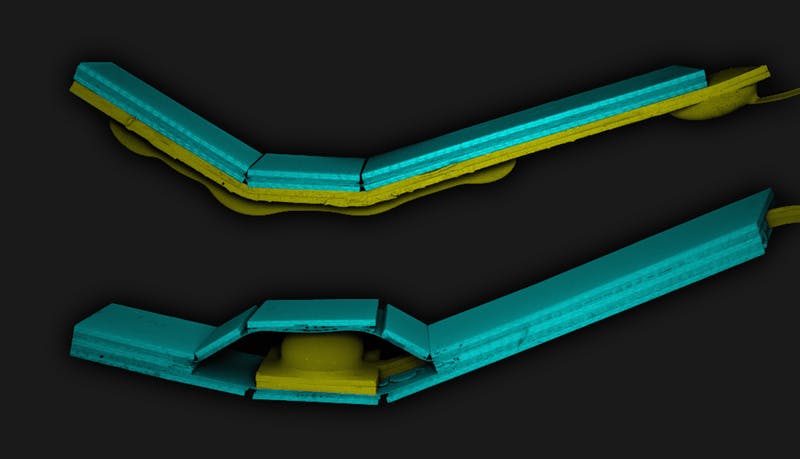Influenced by biology and utilizing the latest in fabrication and materials, scientists from Harvard University’s Wyss Institute for Biologically Inspired Engineering and the Harvard John A. Paulson School of Engineering and Applied Sciences (SEAS) have created new tools for endoscopic surgery. Between soft robotics and pop-up fabrication, the new tool provides the flexibility and strength of a traditional endoscope with a new dexterity and gentler touch.

A conventional endoscope is narrow and flexible enough to navigate the soft passages of a body and are equipped with hard tools for aiding in surgery. However, the rigidity required to perform surgery or manipulate tissues often makes it difficult for the tool to be as sensitive or dexterous as a surgeon may require. Yet an entirely soft tool would be too soft to get the job done.
Harvard researchers solved the problem by emulating the human body itself. The new tool has a stiff interior structure surrounded by soft materials, the way the human arm is bone surrounded by flesh and muscle. At the tip, the surgical tool lays flat until required when a chemical reaction, activated by water, releases binds allowing it to form its full 3-D shape. This 2-D to 3-D transformation is possible due to previous work developing pop-up manufacturing by Dr. Robert Wood a faculty member at the Wyss Institute and professor with SEAS.
Additionally, the improved endoscope has a built-in sensing capability to give the surgeon a better idea of the tool’s movement, with room to add expanded instrumentation or flexibility if needed. It is made from biocompatible materials and can be manufactured in bulk, both key for making the tools widely available.
Their research, made available in Advanced Materials Technologies, also shows how the tool can be made at a width as low as 1 millimeter, making it possible for endoscopic surgeries in the brain or lungs. Researchers will continue their development on the device with future testing in living tissues.
More News to Read










